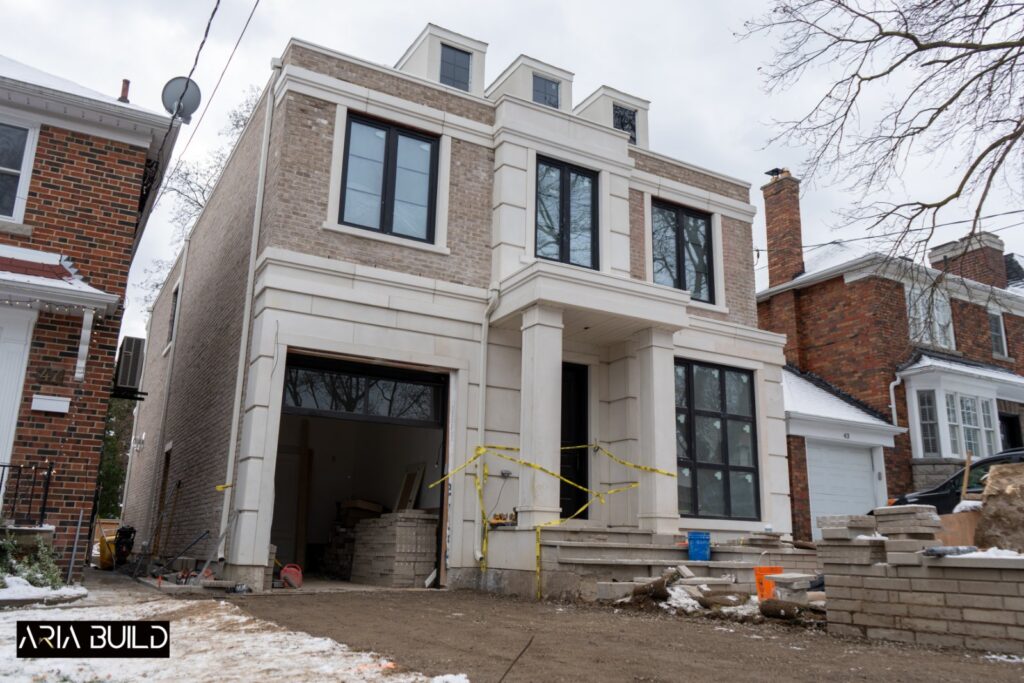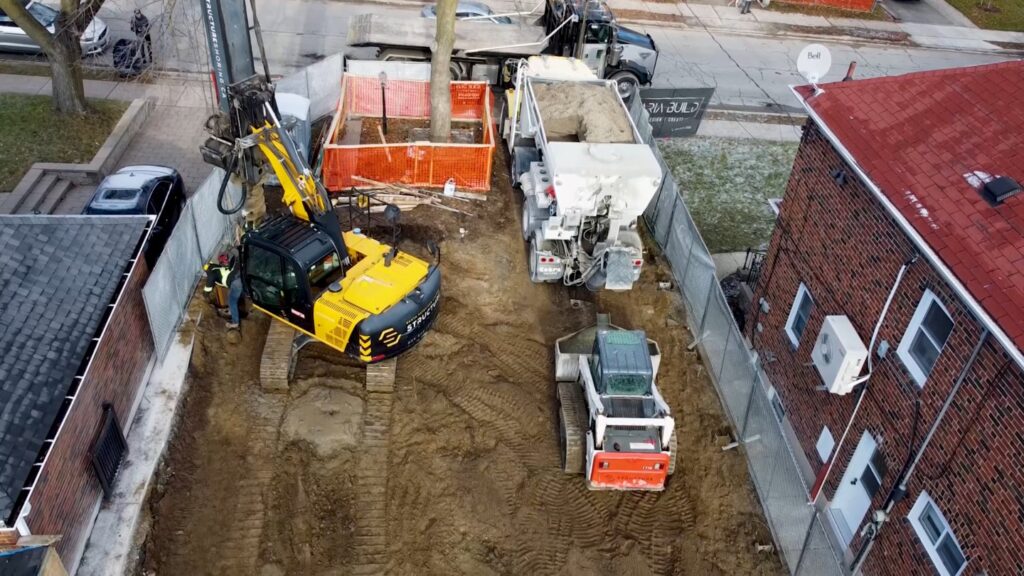The perfect home looks a bit different for everyone. While a luxurious, custom-built house might be one person’s dream, a simple, cozy, and budget-friendly home could be another’s. Before you start your home-building project, you’ll need to decide which house is right for you. This blog provides the ultimate comparison between a custom home vs. production home. Read on to discover production and custom home definitions, advantages and disadvantages, and more.
What Is a Custom Home?
The building process for a production home is more structured than customized home building. Instead of working with designers and project managers, the builder will offer pre-set plans and design options. Having standardized designs, materials, and finishes allows the construction process to move faster. On average, a production-built home can take 3 to 6 months to construct.


What Is a Production Home?
Production homes use standardized plans and designs. This shortens the construction timeline, which allows families to move in faster. However, customization is limited, resulting in a more uniform design that lacks the personal touch of custom homes. Production houses are common in highly populated areas, such as the suburbs. Production houses are a budget-friendly alternative to customized homes.
Custom Home vs. Production Home: Advantages & Disadvantages
Each type of home, production and custom, comes with its own unique benefits and drawbacks. Reviewing the pros and cons of each can help you determine which is the best fit for you and your family. Take a look below to explore the advantages and disadvantages of custom-built and production houses.
Custom Made Homes
Advantages:
– Customization of materials, finishes, and fixtures
– Increased quality control
– Individualized design and layout
Disadvantages:
– Longer construction timelines
– Increased costs
– More complex decision-making process
Production Homes
Advantages:
– Budget-Friendly
– Quicker Construction Process
– Less of a Wait to Move-In
Disadvantages:
– Limited Customization
– Reduced Quality Control
– Uniform Appearance
Custom Home vs. Production Home: The Building Process
Another key consideration when choosing between a production and customized home is the building process. Here you can review the building process for each:

Custom Home Building Process
Custom home building involves a more collaborative approach than production building. Throughout the design and build phases, you’ll meet with your contractor and their team to discuss the project specifications, goals, and progress. This can include communicating with the architectural, design, and/or building teams. The construction timeline for a customized home ranges on average from 6 to 12 months or longer depending on the project scope.
Production Home Building Process
The building process for a production home is more structured than customized home building. Instead of working with designers and project managers, the builder will offer pre-set plans and design options. Having standardized designs, materials, and finishes allows the construction process to move faster. On average, a production-built home can take 3 to 6 months to construct.


How To Choose Between a Custom Home vs. Production Home
All of the above factors, including budget, customization, and timeframe, are key in determining if a custom-built or production house is right for you. Additionally, your future plans should be taken into consideration when selecting the type of home to invest in. Here’s a closer examination of how each factor may affect your decision:
Conclusion
Choosing between a custom home vs. production home is a big decision that should be considered carefully. From budget constraints to future planning, there are many factors to consider before you make your final choice. If you’re in need of further guidance or are ready to start your custom-building project, contact Aria Build for a free consultation.
